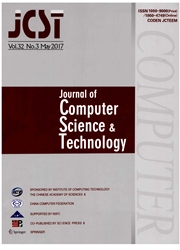

 中文摘要:
中文摘要:
Multicast 为无线传感器网络(WSN ) 是必要的应用程序。在 WSN 的存在多点传送协议经常在一个 P2P 模式被设计,假定在网络拓扑的目的节点和经常的变化的小数字。以便真正在 WSN 采用 multicast,我们求婚一基础车站基于模型 multicast, SenCast,遇见应用的通用需求。SenCast 为在 WSN 的大组通信可伸缩、精力有效。SenCast 对有能力的理论分析表演接近最小的 Nonleaf 节点(MNN ) 问题到 ln ∣R∣ 的比率(R 是所有目的地的集合) ,最好已知的最低界限。我们在 Mica2 尘埃上通过全面模拟和原型实现评估我们的设计。试验性的结果证明 SenCast 包括最近的工作 uCast 超过以前的多点传送协议。这篇文章的联机版本(做 i:10.1007/s11390-008-9177-0 ) 包含增补材料,它对授权用户可得到。
 英文摘要:
英文摘要:
Multicast is essential for wireless sensor network (WSN) applications. Existing multicast protocols in WSNs are often designed in a P2P pattern, assuming small number of destination nodes and frequent changes in network topologies. In order to truly adopt multicast in WSNs, we propose a base-station model-based multicast, SenCast, to meet the general requirements of applications. SenCast is scalable and energy-efficient for large group communications in WSNs. Theoretical analysis shows that SenCast is able to approximate the Minimum Nonleaf Nodes (MNN) problem to a ratio of in IRI (R is the set of all destinations), the best known lowest bound. We evaluate our design through comprehensive simulations and prototype implementations on Mica2 motes. Experimental results demonstrate that SenCast outperforms previous multicast protocols including the most recent work uCast.
 同期刊论文项目
同期刊论文项目
 同项目期刊论文
同项目期刊论文
 Building Quick Service Query List Using WordNet and Multiple Heterogeneous Ontologies toward More Re
Building Quick Service Query List Using WordNet and Multiple Heterogeneous Ontologies toward More Re 期刊信息
期刊信息
